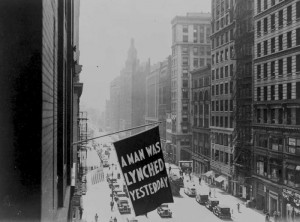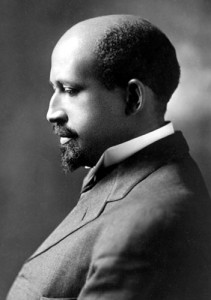Two flag stories for Black History Month

Black History Month in February provides the opportunity to recall events that connected Black Americans to flags. One story is horrible; the other, inspiring.
LYNCHING
After the end of the Civil War Flags and the emancipation of slaves, many angry Southerners avenged their defeat by persecuting Blacks, denying their rights and lynching them for supposed capital crimes. The Ku Klux Klan was in the forefront of the attacks, but they were not alone.

Along with many Americans, the world took notice of the injustice. In 1894, for example, a London newspaper excoriated “these American citizens who are committing crime with apparent impunity….Do [Americans] intend to stand consenting in silence while [the American flag] is dishonored?”
Many of those executed were totally innocent or guilty of non-capital crimes. In one appalling case, a black man was hanged for writing an insulting letter to a white person. Lynching did away with the right of trial and judgments by a jury of one’s peers. A recent study that compiled such incidents concluded that nearly 4,000 men were lynched between 1877 and 1950.
In the North, efforts were launched to bring an end to the murders, and one of those efforts was the display of a Black Flag. The NAACP was behind that symbolic refutation of lynching. Beginning in 1920 in New York City, “a huge black flag bearing the inscription ‘A Man Was Lynched Yesterday’ in white block letters floated above Fifth avenue,” news reports noted.
The tradition of the flag, which in one year had to be put out 30 times, continued into the late-1930s.
W.E.B. DuBois, one of the main figures pressing for equal rights, was behind the public display of the flag to call attention to the illegal actions being taken by whites.

LEARNING
With emancipation, Black Americans began improving society in many aspects, from the arts to medicine, sports to science. They also founded institutions of higher education to make sure their children could get college degrees when other universities shunned them.

In one case, a college focused not only on minorities but also on women. That’s the mission of Spelman College in Atlanta, founded 135 years ago.
Named for Laura Spelman, the abolitionist wife of oil tycoon John D. Rockefeller, who helped to fund the school, the college describes itself as “a global leader in the education of women of African descent.” Spelman also once sent a flag into space. When Mae Jemison, the first Black woman astronaut, was launched beyond the atmosphere in 1992, she took along the college flag.

The Spelman college flag consists of the seal of the institution prominently displayed on a blue banner. The college defines the purpose of the seal as “intended to signify an official document from the institution,” such as diplomas and awards. “It should not be used as a decoration,” the guidelines state, “nor should it be printed on paraphernalia, unofficially amended or changed in any way.”
That’s a good lesson for all college flags.
